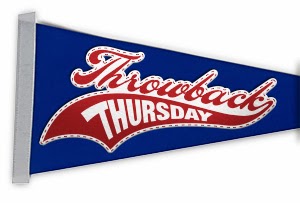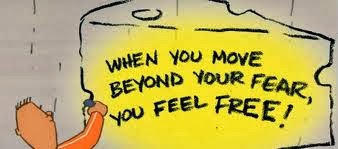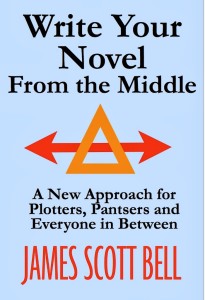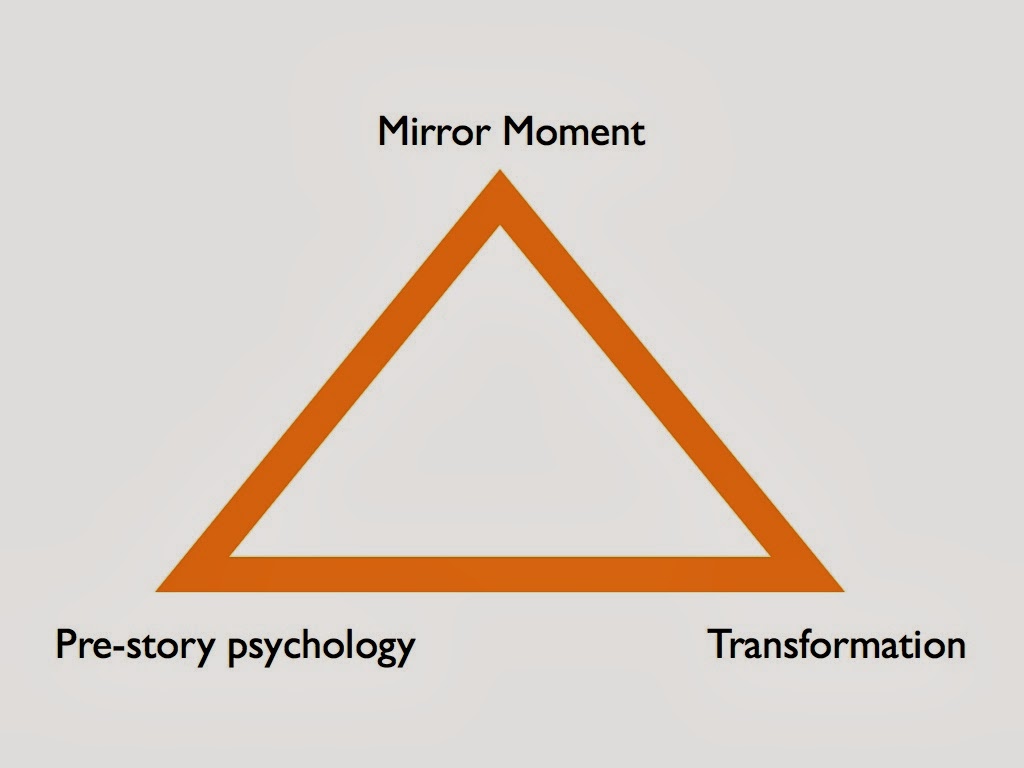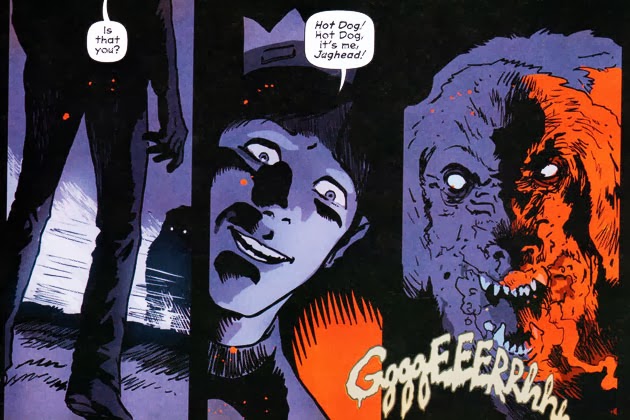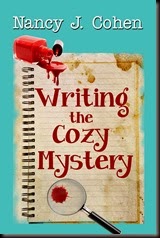Yearly Archives: 2014
Angry Enough To Kill – First Page Critique
Jordan Dane
@JordanDane
This anonymous submission is called Angry Enough To Kill. I’ll have my critique comments on the flip side. Enjoy!
HUNTING SEASON
Some people say most decisions are reversible, but what do they know? Not this decision. This time, she’s damned if she´ll change her mind and damned if she doesn´t. She’s come too far and given up too much. The time to reconsider is past.
In the late Fall chill, she quickens her pace along the forest trail, the ground hard and frozen beneath her moccasins. The winter snows have yet to fall in Jackson, Wyoming, and for this, she is grateful. The sawed-off shotgun digs through the backpack into her waist, and she shrugs its weight to the side, rubbing her hands over her arms to warm them, forcing her fingers deep into her gloves. Her mouth is so parched, her lips cling to her teeth.
The fog forms and fades away, only to form again in different shapes, hunters …witnesses.
Don’t think. Just get it done.
Beside the Snake River, trees pierce the haze. Tendrils of fog slither down the alder standing alone in the center of the clearing, and she imagines them creeping along the ground toward her. Magpies tch, tch, tch. An eagle screeches, wings flapping, and the river churns in the distance.
At the side of the clearing, she clambers over a fallen pine, crawling under the boughs she arranged so meticulously the day before. The laces on one of her moccasins have come undone. She ties them, this time with a double knot, loads the tranquilizer pistol and settles down. It shouldn’t be long now.
Nothing obstructs her view of the pathway leading from the town to the river. She rests her arms on the log, and waits, like a child playing soldier, but this is not child’s play.
Something crawls up her neck. She swats at it; a spider lands on her arm. She coughs back a scream, and brushes it off. After a time, her knees ache and she shifts on the damp leaves, releasing a whiff of mold and decay.
A twig snaps.
Her hand tightens around the dart pistol.
Please let it be Devlin.
He’s whistling, a tuneless wheeze she’s heard before, and he carries a plastic bag. She knows what’s inside: a Sears catalog with pictures of children in their back-to-school clothes.
Will he take a leak as he did yesterday and the day before? She tries not to breathe.
He hangs the bag on a branch of the alder and…
My Critique:
Wow. Did I love this. This author creates tension and doesn’t over-explain or “tell” the reader what’s happening. The author shows it and also does a great job at incorporating the setting in an evocative way. The first strong foreshadowing (beyond the intro paragraph) is the word “witnesses.” Good instinct, author. In one word, the reader knows the woman is not there to hunt.
Use of Present Tense:
I’m not a big fan of present tense. I’ve seen it effectively used for the young adult market, because it puts the teen reader into the moment with more immediacy. If this is a book for teens, maybe the present tense will work, but in general, the use of it throws me from the work. We’ve talked about this on TKZ before. Anyone have comments on present tense?
No Name:
This isn’t a big deal in this strong submission, but is there a reason that the character is not named? Sometimes an author thinks it is necessary to withhold a name and I’ve certainly had my reasons for doing it on occasion (mostly no name characters who will be dead by scene end). But it might help the reader to connect with this character if she’s given a name. Something to think about, dear author.
Stronger Opener:
Option 1: The first option to make this start stronger is to eliminate the first paragraph. It foreshadows what’s ahead, but it reads as author intrusion, like a storyteller giving an omniscient point of view. If it’s deleted, the reader can get immediately into the action and still have a subtle foreshadowing doled out in the narrative to come.
Option 2: Tweak the opening lines to make them stronger. Here are a few suggestions:
<<Some people say most decisions are reversible, but what do they know? Not this decision.>>
This line could be stronger if the author commits to the thought from the character’s POV and not make it a generic saying about “some people.”
For example:
Most decisions can be changed. Reversed. Not this one.
Some may have the view that the first paragraph isn’t necessary, that the author could lull the reader into the menace of the story by making it seem as if she’s merely hunting before they learn “who” she’s stalking. Although I like the short and sweet foreshadowing of the first paragraph, it could use more punch.
<<She’s damned if she´ll change her mind and damned if she doesn´t. She’s come too far and given up too much.>>
These lines are good, but they seem a bit cliché and generic for me. When an idea can be expressed in a cliché manner, I try to find an alternative way to express the thought, but with a more visceral approach.
For example:
She’d be damned for what she’d come to do, but damned for doing nothing is worse. He’s given her no choice. Not now.
<<The time to reconsider is past.>>
This line seems weak and without emotion, given what the character’s intention is. To pull out my meaning, this time I’ll ask the author an open ended question only they can answer, so I don’t sway the author into my point of view on specific wording. This line needs more punch that foreshadows the danger and commitment ahead.
1.) What does it feel like for her to know she will be a lawbreaker? This isn’t lip service. She’s crossing a moral line and she’ll never get back her innocence.
2.) Does her decision physically manifest in her body? She’s committed to a cause and willing to risk everything.
Sentence Structure:
In the sentence “At the side of the clearing, she clambers over a fallen pine, crawling under the boughs…” That sentence can be made simpler and stronger if the writer eliminates the ‘ing’ from crawling.
Example: “At the side of the clearing, she clambers over a fallen pine and crawls under the boughs…”
I understand the cadence of the structure, but this is something I have to look out for myself. Overuse of ‘ing’ words can force the reader to reread a passage if they get lost in a long sentence and forget what is modifying what.
Also look at the sentence: “An eagle screeches, wings flapping, and the river churns in the distance.” The eagle screeching doesn’t imply the bird is flying. It could be on a branch in a tree. Flying can be assumed, but the sentence would be clearer as follows: “An eagle screeches overhead with its wings flapping and the river churns in the distance.”
In critiquing another author’s work, it’s easy to nitpick on word choices and phrasing. We all want to give feedback to help the author make this a stronger submission (in our opinion), but only the author can make the decision on what will be changed. Overall there is a lot to like about this submission. I would definitely love to keep reading. The author has my undivided attention.
Comments, TKZers?
Write Aids
Wouldn’t it be great if we could download a software program, input some general ideas about a book we want to write, click compose, and an 80k-word manuscript magically appears? That’s certainly the Holy Grail of writers everywhere. Let the application do the heavy lifting while we just sit back and think up more great ideas. As of today, that software program doesn’t exist.
Still, writers are always looking for a shortcut. A tool that can take some of the pain away. A tool that can make the journey through the 3-act novel a bit easier. There are some programs that can help, even just a little.
Granted, the only tools needed to write a novel are a sharp pencil and a pad of paper. And some writers still use that method while others have gone on to word processors like MS Word. I prefer the latter since I can’t read my own writing.
But for those who seek a little bit of help to assist in the process, I’ve assembled a list of applications that might. I’ve never tried any of them and endorse none. But if one Zoner out there benefits from one of these, then my work here is done.
Probably the most popular program for novelists is Scrivener. Bestselling novels have been written with it and those who use it love it. You can test drive it for free.
After Scrivener comes smaller programs that focus on particular aspects of the writing process. Here’s a list. Hope you find that magic bullet in the list somewhere.
Note Everything. The ultimate note pad.
Write or Die 2. Helps to eliminate writer’s block.
yWriter5. Helps you to plan your novel.
Diaro. Advanced diary application.
Writer Pro. Professional writing suite.
FocusWriter. Gets rid of all distractions so you can concentrate on writing.
Writer. Helps you focus on your writing.
Hemingway. Helps you write bold and clear.
wikidPad. Helps you to link your ideas.
Wise Mapping. Online mind mapping tool.
MindNode. More mind mapping.
TreeSheets. Powerful note taking app.
Bubbl.us. Brainstorm or create a map for your ideas.
Sigil. EPUB editor.
Vizual Einstein. Visually develop a project.
The Writers Store. Complete source for writing software and other stuff.
There are tons more out there. You can find them with a simple Google search. So, fellow Zoners, do you use any writer aids or are all you writing tools in your head? Any programs to recommend?
————–
Coming this spring: THE SHIELD by Sholes & Moore
Einstein got it wrong!
A Mindset Stuck in the Past
There’s a tradition on social media called “Throwback Thursday”, in which people post pictures of themselves from the past. I was reminded of Throwback Thursday yesterday when I read an article in The Guardian, a British newspaper.
In “From bestseller to bust: is this the end of an author’s life?“, editor Robert McCrum interviews authors who find themselves struggling to adapt to an era of reduced advances from publishers. The article suggests that the mid-list writer is an endangered species. Read the article, and then come back.
I was astonished by the defeatist mindset of the authors who were interviewed in the article. They seemed to assume that if they were no longer getting livable advances from publishers, the game was over. Say what? Has no one in Britain heard of indie publishing? Indie publishing wasn’t even mentioned in the article (one reader did describe indie alternatives in the Comments, which sounded a bit like Sir Walter Raleigh bringing news of the potato and other New World wonders back in 1589.) Other commenters then proceeded to confuse the indie industry with vanity publishing.
Most of all, the article mourns the passing of a more “genteel” era in publishing:
Publishers were toffs, booksellers trade and printers the artisan champions of liberty. Like the class system, we thought, nothing would change. The most urgent deadline was lunch. How wrong we were.
Indeed. When it comes to adapting to a changed publishing model, I think American writers are ahead of the curve. People on this side of the pond are used to changing the way they work. Many former mid-list writers have reinvented themselves as their own author brands. (And in so doing, have been astonished to discover that they’re making more money than they did under the old system.) Other writers are content to remain in the legacy publishing fold, or they become “hybrids” who do both legacy and indie work. It’s a matter of finding your own comfort level.
But judging by the Guardian article, one has to conclude that British writers are stuck in the Grief stage about the changed publishing world.
It’s not helpful to remain mired in the past. Maybe we should send our British friends some copies of WHO MOVED MY CHEESE?
Author Responsibility
Last weekend I went to the Society for Children’s Book Writers and Illustrators (SCBWI) conference in New York City and one of the key note talks was on the issue of author responsibility. I have to admit it isn’t something I’ve thought much about – beyond my responsibility to readers to write the very best books I can. My books don’t tend to contain graphic violence or sex and I don’t write with any particular agenda or controversy in mind, so it was interesting to hear what one writer thought was her responsibility as an author.
Obviously, the issue was of particular concern to her (and to most SCBWI members, I suspect) because she wrote for children and teenagers. What I didn’t expect was that she would feel so strongly about her responsibilities, beyond that of ‘professional grace’, to instances where readers were indirectly affected by the book she had written. One example she gave was of a family who were listening to her audio book in the car and who were so overcome by emotion by the story that they were pulled over for speeding – she felt that she, as the author, was responsible for that occurring. Now in that instance, I disagree. I think there are many indirect consequences of reading/listening to a story which are not the author’s responsibly because readers have a choice as to where and when they read/listen and for their own behaviour as a result.
Still, the concept of ‘author responsibility’ is an intriguing (and often fraught) concept…and I’m not even sure I’m totally clear on what that concept means to me. At the very least I think author should take responsibility for striving for excellence in their writing and that they should behave as a professional in all aspects of their career. At a minimum they should be held responsible for plagiarism and copyright infringement of other people’s work. As an author I also wouldn’t want to incite anyone to hatred or violence – but when I think about other authors’ work I can see the concept of ‘responsibility’ could be a slippery slope indeed.
As a strong supporter of intellectual freedom, I certainly don’t believe in author censorship but as a mother I’m also aware of the responsibilities involved when caring for young minds. I think it’s important that writers (including writers of children and YA books) tackle weighty issues such as drug abuse, sexual assault, domestic violence, racial discrimination, persecution and bullying. Adults, children, and teenagers can only benefit, in my opinion, from being exposed to a variety of books dealing with a broad range of issues and perspectives (even those that make me personally uncomfortable).
Though I am often ‘caretaker’ when it comes to what my children read, I never feel that I have any right to advise others as to what their children should or should not be reading (ditto for adults!). So what do I feel, as a reader/mother, is an ‘author’s responsibility’? Do these standards differ to what I feel I’m responsible for as a writer? I’m not sure. But the talk at SCWBI certainly made me think about what I expect from both myself and other writers.
So what do you think is your responsibility as an author? What standards to you hold yourself up to and do these standards differ when it comes to other authors?
A New Approach for Plotters, Pantsers, and Everyone in Between
Afterlife with Archie
Reader Friday: Overcoming Adversity
Do You Have a Writing Question for TKZ? Let Us Know!
4 Giant Steps to Self-Publishing
Recently I have released my first nonfiction title. This came about because numerous aspiring authors kept asking me how to write a mystery. So I compiled my teachings into an easy-to-read booklet with concise instructions on Writing the Cozy Mystery. Here is a distillation of the steps I followed to produce this work.
Please note that today I am en route to Orlando for SleuthFest, and I may not be able to reply to comments in a prompt manner. I will look at them later and do my best to respond in a timely fashion.
Manuscript
Hire a story development editor and a copy editor. Polish your work to perfection.
Insert front and back material into manuscript.
Write back cover copy.
Legal
Create a publisher name and register with your State as “Doing Business As” title. Or create an LLC if you prefer. Check with your accountant for more info.
Put a Legal Notice in your local newspaper if required by the State.
Apply for a county business license/tax receipt. Note: if you’re 65, you may be exempt from fees but you still have to apply. Renewal is annual.
Open a business bank account under DBA title. As sole proprietor, you don’t need an EIN number. Use your own SS number.
Order checks for new account.
Buy ten ISBNs from Bowker.com.
Production
Hire a cover designer for ebook cover and trade paperback cover.
Determine book price for digital edition.
Assign an ISBN number to the digital edition at MyIdentifier.com (if you’ve bought them from Bowker). You will need to upload the cover and give the price.
Hire a formatter after inserting the ISBN into your copyright page. Note that the print edition will have a separate ISBN from the ebook edition so you’ll need to send the formatter two different files or pay for a correction later.
Upload your e-book to Amazon, Apple, BN, Kobo, Smashwords, AllRomanceEbooks/OmniLit. It may be easier to hire your formatter to upload to iBooks since I believe you need to own an Apple device to do this step.
*File for copyright now so you don’t have to send two print books to the copyright office.
Upload to Createspace for a print edition. If you use their ISBN, you can sell your CS book to libraries. If not, librarians will have to get your book through another source or buy it through normal channels. Consider Lightning Source and Espresso Machine as other print options.
Consider an audio edition via ACX with another ISBN assignment and a cover resized to this format.
Marketing
Order print materials to promote your work, i.e. bookmarks, postcards, etc.
Consider doing a virtual blog tour.
If you set a particular release date, hold an online launch party.
Post your release news and book cover on all your sites.
Solicit Customer Reviews.
Run a Rafflecopter Contest.
Consider if you want to give away free copies or promote a bargain/sale price.
Join indie author forums online for more tips.
Obviously, marketing could be a whole other topic as could each one of these sections. I do plan to blog about this process in more detail at a later date on my personal blog. Meanwhile, these steps will get you started in the right direction. Those of you who have been through this journey might have more to add.
<><><>
Writing the Cozy Mystery is a valuable guide on how to write a traditional whodunit. This concise tool will show you step-by-step how to develop your characters, establish the setting, plot the story, add suspense, plant clues and sustain your series. You’ll find everything you need to know in an easy-to-read, clear manner to write your own whodunit. http://nancyjcohen.com/books/nonfiction/


